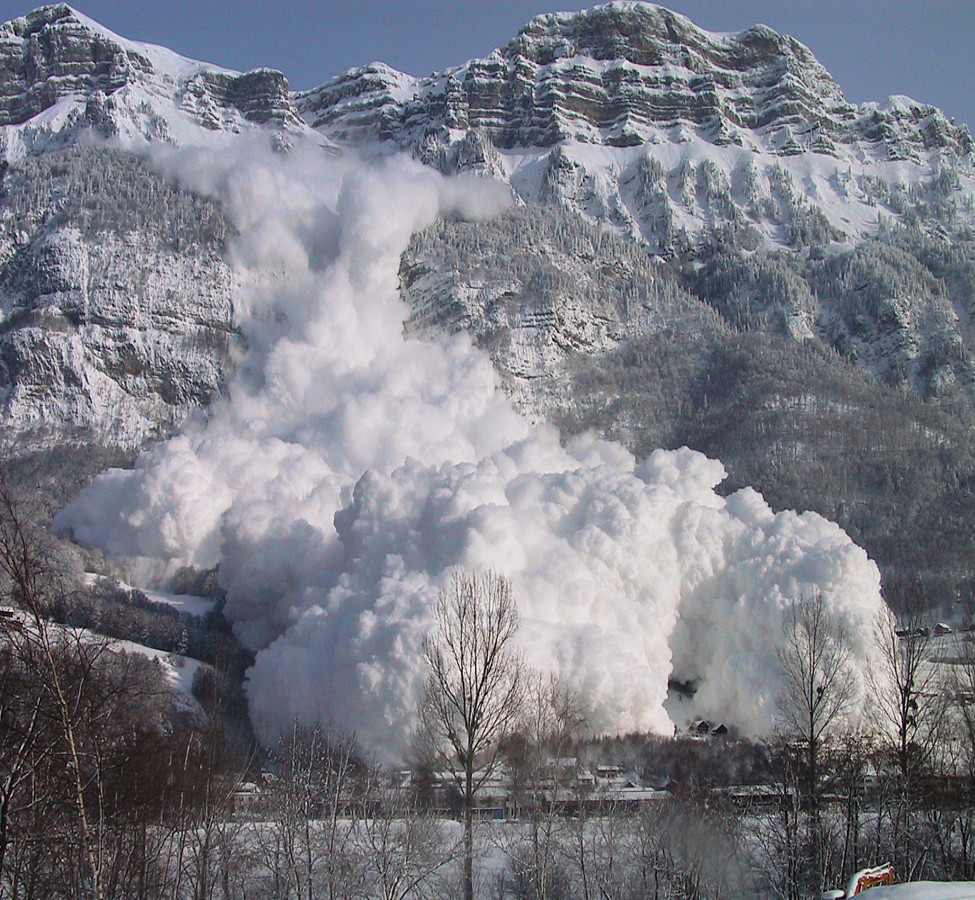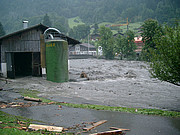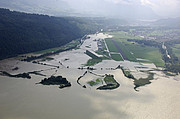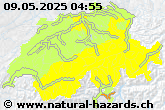Formation of floodings
Heavy or long lasting rain and/or snow melt can result in an increased runoff. The channel is to small for this quantity of water and, consequently, overtops its banks. In addition to that, high quantities of bedload can result in riverbed aggradation blocking the channel and, hence, cause flooding. A clogging holding back the water can end in floods. During a long lasting flood discharge there is additional danger of flooding through a breach in the dyke.
A distinction is made between two types of flood:
Dynamic flood
On slopes, along torrents and mountain rivers, flowing water exits the channel bed at a high flow rate. Due to the high level of flow energy, a lot of gravel and debris is carried along by the water and deposited outside the channel (overbank sedimentation). Dynamic floods are generally brief in duration (a few hours). Due to the slope, the water drains off again. However, this can cause further erosion.





